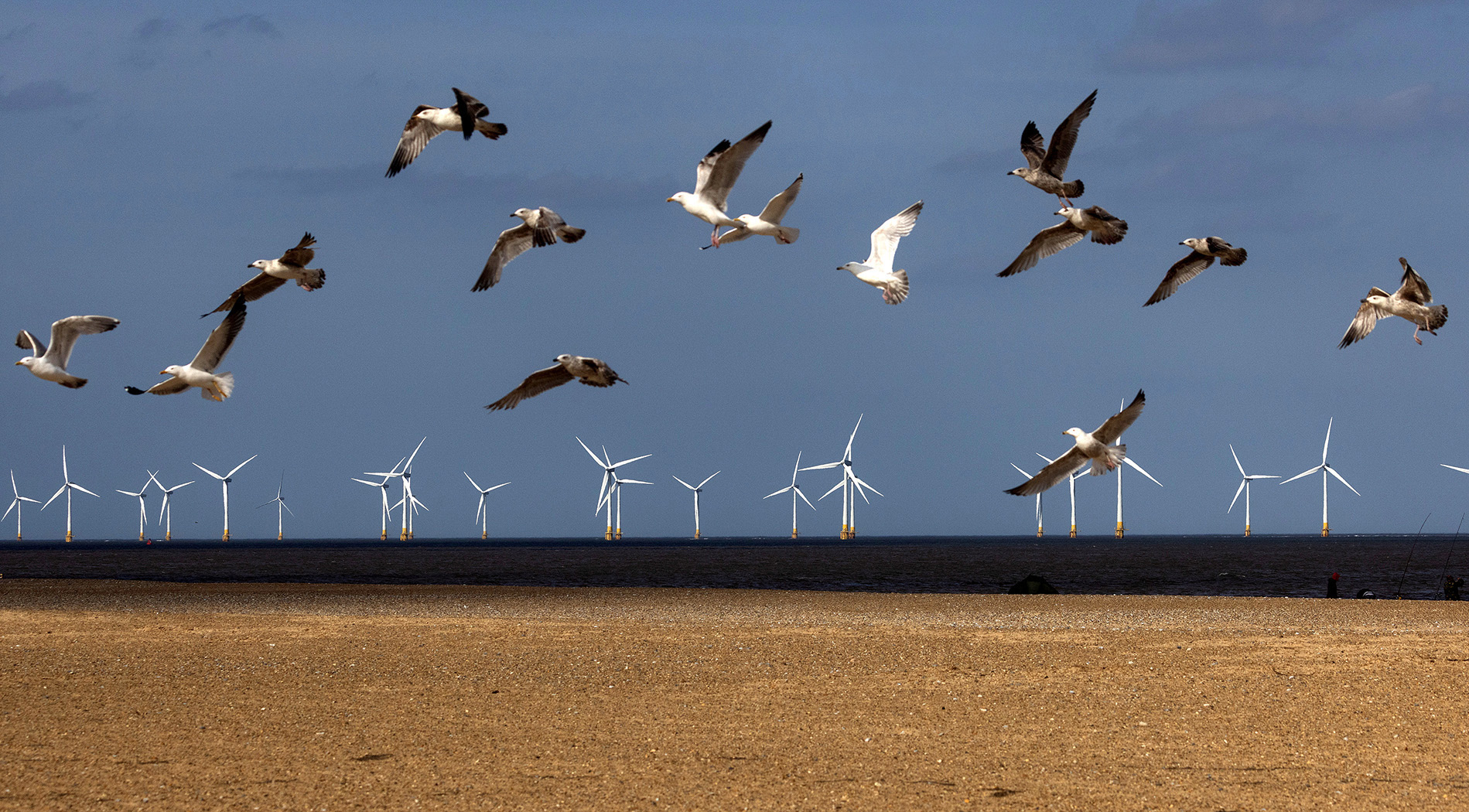Birdlife South Africa has reported that birds from at least 200 species have had fatal collisions with wind turbines in South Africa and that almost every wind farm in the country has recorded fatalities of threatened and priority species.
However, there are solutions in the works. One is a bird fatality mitigation pilot project that involves painting and patterning turbine blades to improve their visibility and reduce collisions. The South African Wind Energy Association (Sawea) and BirdLife South Africa have encouraged wind farms to test this strategy.
The Umoya Energy Wind Farm, 125km north of Cape Town, is piloting this project.
Dr Rob Simmons, the CEO and co-founder of Birds & Bats Unlimited, said 10 turbines should be painted with a “signal red” colour and 10 turbines should be used as controls (remaining unpainted).
The blade-patterning project was inspired by a similar project at the Smøla wind-power plant in Norway, which “showed a significant reduction in annual [bird] fatality rates”.
In this experiment, one of the three blades on a wind turbine was painted black, resulting in 70% fewer fatalities at the four turbines with painted blades than at the neighbouring (unpainted) control turbines.
Bird fatalities from wind turbine collisions
Samantha Ralston-Paton, the birds and renewable energy project manager at Birdlife South Africa, said that at least 200 bird species have had fatal collisions with wind turbines in SA and that almost every wind farm in the country has recorded fatalities of birds from threatened and priority species.
Wind farms in South Africa are required to monitor their impacts on birds and report this to the Department of Forestry, Fisheries and the Environment, and BirdLife SA.
“We extract the data from the reports and add it to a database of impacts (recording date, species, location, wind farm, survey methods, etc),” she said.
Ralston-Paton said the issue was not so much the impact of individual wind farms on birds but the cumulative effect of multiple wind farms.
The endangered black harrier was a prime example. “The actual number of individuals lost thus far may not seem huge, but by increasing their fatality rate by just three to five birds a year, we will accelerate its time to extinction. The population is already really small — around 1,200 mature individuals,” Ralston-Paton said.
She said it was important to keep in mind that without mitigation, impacts could be ongoing during the 20-year lifespan of a wind farm, and with South Africa’s plans to increase the number of turbines significantly over the next 10 years, mitigations could help some endangered bird species to survive.
Fatalities from collisions with wind turbine blades in South Africa have been recorded in other threatened and priority species, including the Verreaux’s eagle (classified as vulnerable), the Martial Eagle (classified as endangered), the Cape vulture (classified as vulnerable), and the secretary bird (classified as endangered).
 According to Birdlife SA, almost every wind farm in South Africa has recorded fatalities of threatened and priority species. ‘WEF’ indicates wind energy facilities. (Graphic: BirdLife South Africa)
According to Birdlife SA, almost every wind farm in South Africa has recorded fatalities of threatened and priority species. ‘WEF’ indicates wind energy facilities. (Graphic: BirdLife South Africa)
“As wind expands into new areas (such as Mpumalanga) new species will emerge as priorities, but raptors (especially eagles and vultures) tend to be the biggest challenge… The overlap of good wind resources and vultures in the Eastern Cape is also a real challenge as there are socioeconomic benefits to wind energy development,” Ralston-Paton said.
“One wind farm reported almost 50 birds killed per turbine per year — mostly swifts (not threatened).”
Bat fatalities from wind turbine collisions
The South African Bat Assessment Association (Sabaa) said that while bats have sophisticated means of detecting their environment and orienting themselves (such as echolocation), there was a concerning number of bat fatalities at wind turbines.
“This is because large turbine blades move too fast to allow bats to avoid collision. Furthermore, echolocating bats may not echolocate on known routes and so may be surprised by the appearance of new turbines in routine flight paths. Bats may also be killed at wind turbines due to barotrauma (internal injuries due to decompression in the zone of low air pressure near moving blades),” the association said.
At the Windaba energy conference in Cape Town this month, Stephanie Dippenaar from Sabaa said that “over 64 species of bats are threatened by wind turbines” and that bat fatalities may outnumber bird fatalities.
Apart from fatalities from collisions with blades and barotrauma, other adverse effects of wind turbines on bats include roost disturbances and/or destruction, the destruction of foraging habitats, the displacement of bats from their foraging habitat and barriers to migration routes.
One solution to combat bat fatalities from wind turbine collisions is bat deterrent technology. At Windaba, NRG Systems explained that bat deterrent systems use ultrasound to discourage bats from entering a turbine’s rotor-swept area.
NRG has successfully tested this technology and implemented systems in South Africa, North America, France and Belgium. DM
https://www.youtube.com/watch?v=REeWvTRUpMk




 According to Birdlife SA, almost every wind farm in South Africa has recorded fatalities of threatened and priority species. WEF are wind energy facilities.
(Graphic: BirdLife South Afica)
According to Birdlife SA, almost every wind farm in South Africa has recorded fatalities of threatened and priority species. WEF are wind energy facilities.
(Graphic: BirdLife South Afica) 